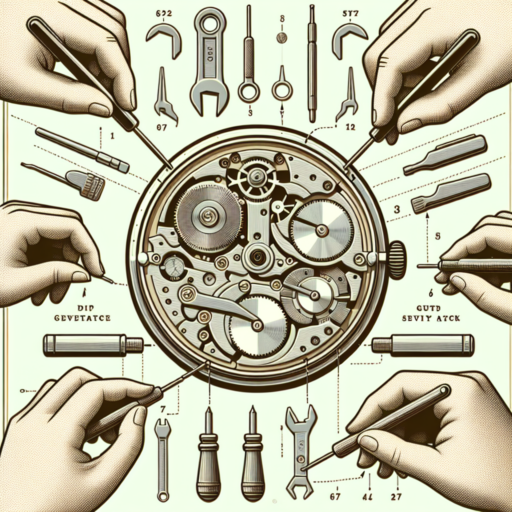No se han encontrado productos.
How do you set a barometer in the UK?
Setting a barometer in the UK requires understanding both the instrument and the specific atmospheric conditions prevalent in the region. The process is straightforward but demands precision to enhance the barometer’s accuracy in forecasting the weather. Barometers, tools for measuring atmospheric pressure, can indicate weather changes by detecting variations in air pressure. This guide focuses on the essential steps to accurately set your barometer in the UK.
Step 1: Adjusting To Local Pressure
The initial step entails adjusting your barometer to reflect the local atmospheric pressure. This is crucial because the UK’s geographical differences mean that atmospheric pressure can vary significantly from one area to another. Use a reliable local weather service to find the current atmospheric pressure in your area. Most barometers have a screw or knob on the back that you can turn to align the instrument’s reading with the local pressure.
Step 2: Calibration for Accuracy
Calibration is the next important step in setting your barometer in the UK. This involves checking and adjusting your barometer to ensure its readings are as accurate as possible. It’s recommended to calibrate your barometer during a period of stable atmospheric pressure. This typically requires you to cross-reference your barometer’s readings with a trusted, accurate standard, such as the Met Office’s reported pressure, and make adjustments as necessary.
Remember, regularly monitoring and adjusting your barometer is key, especially in the UK where the weather can change rapidly. With these steps, you’ll have a well-set device ready to offer you more reliable insights into upcoming weather patterns.
How do I know if my barometer is working properly?
To determine if your barometer is functioning correctly, there are a few methods you can follow. First, it’s essential to understand what a barometer does; it measures atmospheric pressure. This measurement can help predict weather changes, as fluctuations in atmospheric pressure are directly connected to weather patterns.
Simple Observations
Start by making simple observations. Check the barometer’s readings during a known stable weather period. For instance, on a clear and calm day, your barometer should show steady readings. If the weather shifts dramatically, your barometer’s readings should reflect these changes correspondingly. If the readings remain static despite evident weather transitions, your instrument might not be working correctly.
Comparative Analysis
Another method involves using a comparative analysis. Compare the readings on your barometer with the official atmospheric pressure reported by a local weather station. Differences in readings are natural, but they shouldn’t be drastically off. If your barometer consistently shows a significant discrepancy from the official readings, there may be an issue with its calibration or functionality.
Remember, if your barometer has a manual adjustment screw, it might just need recalibration. Calibration procedures vary, so refer to your manufacturer’s instructions for specific guidance. Observing how your barometer responds to known weather changes over time is a reliable method to assess its accuracy and functionality.
What are the correct steps to accurately set and read a barometer?
Understanding the correct procedures for setting and reading a barometer is paramount for accurate atmospheric pressure measurements. A barometer, an essential tool for both meteorologists and hobbyists, can provide valuable insights into weather patterns. Whether you own an aneroid or a mercury barometer, the initial setup and regular calibration are crucial steps that ensure the device’s precision and reliability.
Initial Setup for Accuracy
To kickstart your journey with a barometer, begin by placing it in a stable environment. Avoid areas with drastic temperature changes, as they can skew readings. For aneroid barometers, you must manually set the device to match the local sea level pressure, which you can usually find through weather services. Mercury barometers, on the other hand, are generally self-setting but require careful handling to maintain the integrity of the mercury column.
Reading Your Barometer Correctly
Observing the Barometer’s Needle: For aneroid users, reading the barometer involves closely monitoring the needle’s movement. A steady needle indicates stable weather, a rising needle suggests improving weather, and a falling needle warns of deteriorating weather conditions. Interpreting Mercury Levels: With mercury barometers, the focus shifts to the height of the mercury column. Just like with aneroid models, a rise in mercury levels signifies high pressure and thus better weather ahead, while a decrease points to low pressure and potentially poor weather.
Regardless of the type, regular calibration against known local measurements is essential to maintain accuracy. Additionally, documenting the changes observed over time can enhance your ability to predict future weather changes based on barometric trends. By adhering to these correct steps, you ensure that your barometer serves as a reliable indicator of atmospheric changes, enabling you to make informed decisions or simply enjoy the art of weather prediction.
Do you need to reset a barometer?
Understanding when and why to reset a barometer is essential for obtaining accurate atmospheric pressure readings. These precision instruments can provide valuable insights into weather patterns and changes, but they must be regularly calibrated to ensure their accuracy. Whether you’ve noticed discrepancies in your readings or have recently moved your barometer to a new location, resetting may be the necessary step to getting back on track.
Resetting a barometer often seems like a daunting task to the uninitiated. However, it is a relatively straightforward process that can be accomplished with minimal tools. A small screwdriver or a specialized adjustment key is commonly all that’s needed. The process involves adjusting the barometer’s set screw to align with the current atmospheric pressure, which can be obtained from a reliable weather service. This act of calibration is crucial for the device to accurately reflect changes in the atmosphere.
Maintaining your barometer’s calibration is not only about technical accuracy; it’s also about deepening your relationship with the environment. A well-calibrated barometer can serve as a guide to the shifting dynamics of the weather, offering predictions about approaching systems that could affect your plans and activities. Therefore, knowing how to reset your barometer is akin to understanding a language spoken by the very air we breathe.




